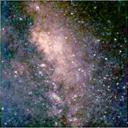Yahoo Answers is shutting down on May 4th, 2021 (Eastern Time) and beginning April 20th, 2021 (Eastern Time) the Yahoo Answers website will be in read-only mode. There will be no changes to other Yahoo properties or services, or your Yahoo account. You can find more information about the Yahoo Answers shutdown and how to download your data on this help page.
Trending News
What type of telescope is best for CCD imaging?
With the need for a flat field of view (i.e. coma free), which type of telescope would you choose between an apochromatic refractor (e.g. Meade 5000 or Skywatcher Equinox) or a Maksutov Cassegrain (E.g Skywatcher Skymax Pro)
The refractor might be better because of the clear aperture, the reflector though has the larger aperture.
5 Answers
- Steve BLv 71 decade agoFavorite Answer
Typically, it seems that refractors give the 'best' results for planetary imaging whilst the biggest reflector you can get is what you need for DSO's (Deep Sky Objects)
If you are doing long exposure CCD then the mount (stability & tracking accuracy) is usually the limiting factor .. however if you 'stacking' (movie) frames, then light grasp (aperture) is usually the limiting factor (yes, CCD's will capture single pixels and stacking will 'average out' the noise, but there is something called the 'diffraction resolution limit' or Dawes' limit')
Even so, amazing results can be achieved with quite modest kit (even a 4" reflector you wouldn't give you kids to play with can be used to take amazing images)
- 1 decade ago
The most important thing in any imaging is the MOUNT. And unless you plan to concentrate on the Moon, planets or high magnification images of dsos, you would want to avoid the Cassegrain types, as their field will be small.
A small ED refractor in the 70-100mm range such as the ones sold here:
http://www.telescope.com/control/main
or a small short focus reflector in the 4"-6" also sold by Orion:
http://www.telescope.com/control/search/~action=2/...
will do quite well especially if you are starting out. You should get a high-quality equatorial mount that should be substantially OVERSIZED relative to your imaging scope, not only for best results, but also in case you decide to upgrade to a larger and heavier scope later on.
If you want to be serious about imaging, then in many respects the mount is everything, and even a mediocre scope can do surprisingly well on a superior mount.
- Anonymous5 years ago
I assembled an aluminum/plastic panel green house for my Mom's garden once. It took two days, one day to dig the foundations (four posts at the corners) and pour the concrete and another day for the actual assembly. The aluminum profiles make these things very sturdy (but it will probably not survive a hurricane or tornado, but then, what will?) and the roof could be easily opened. My Mom loved it. Now the larger question is whether you want to put a telescope for thousand of dollars into a garden shed or greenhouse that can be easily broken into... I wouldn't. And if you don't leave your telescope in there, why do you need an observatory in the first place?
- ?Lv 71 decade ago
Maksutov-Cassegrains are not used much for imaging because of their long focal ratios. Meade is not a big player in the apo market...there are many better brands.
- How do you think about the answers? You can sign in to vote the answer.
- Anonymous1 decade ago
i've had the best results with schmidt-cassegrains and triplet apo refractors.
the sct needs a field flattener. most apos can get away without one for an aps-c or smaller field, but need one for 35mm or medium format imaging. i still have, and occasionally use, a pentax 67 and the stuff to bolt it to my takahashi scope.
are you sure you're up to this? you shouldn't have to ask here.






